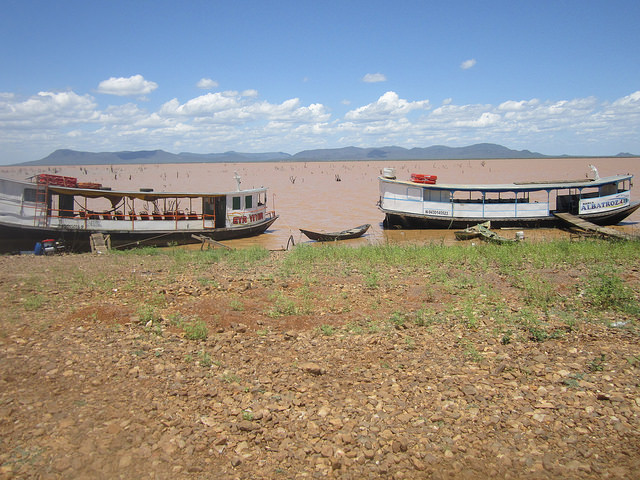

| Online: | |
| Visits: | |
| Stories: |

| Story Views | |
| Now: | |
| Last Hour: | |
| Last 24 Hours: | |
| Total: | |
No more mass deaths from drought in Northeast Brazil
By Mario Osava
1 January 2017OURICURI, Brazil (IPS) – The drought that has plagued Brazil’s semiarid Northeast region since 2012 is already more severe than the 1979-1983 drought, the longest in the 20th century. But prolonged dry spells no longer cause the tragedies of the past.
There are no widespread deaths from hunger or thirst or mass exodus of people due to water shortages, like in the past when huge numbers of people would swarm into cities and towns and even loot the shops, or head off to distant lands in the more developed centre-south of the country, in search of a better life.
The lack of rains, nevertheless, impacts everything. The caatinga, an ecosystem exclusive to Brazil’s semiarid region, which consists of shrubland and thorn forest, looks dead with the exception of a few drought-resistant trees and areas where recent sprinkles have turned some shrubs green again.
The Tamboril reservoir, on the outskirts of Ouricuri, a city of 68,000 people in the state of Pernambuco, has been dry for more than a year now. Fortunately, the city is also supplied by water piped in from the São Francisco river, 180 kilometres away.
“The 1982-1983 drought was worse, not so much due to the lack of water, but because we did not know how to cope with the situation,” Manoel Pereira Barros, a 58-year-old father of seven, told IPS on his farm in Sitio de Santa Fe, about 80 kilometres from Ouricuri.
He got married at the height of the crisis, in 1983. “It was difficult for the entire family … we killed some oxen, we survived on the water from a cacimba (water hole), a few cattle and many goats. The animals saved us, the bean crop dried up,” he said.
That year, the governors of the nine states that make up Brazil’s semiarid region requested more help from the national government, pointing out that one hundred people a day were dying as a result of the drought.
According to the state governments in the region, 100,000 people died in the space of five years, although researchers put the number of deaths at more than 700,000. Most of those who died were children.
And one million deaths is the estimate of Networking in Brazil’s Semi-Arid Region (ASA), a network of 3,000 social organisations created in 1999 to promote the transformations which are improving the life of the population most affected by the drought: poor farmers in the Northeast. [more]
No More Mass Deaths from Drought in Northeast Brazil
Source: http://www.desdemonadespair.net/2017/01/no-more-mass-deaths-from-drought-in.html



